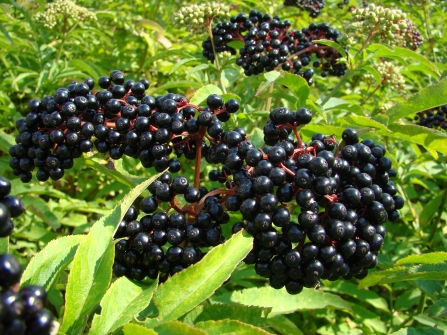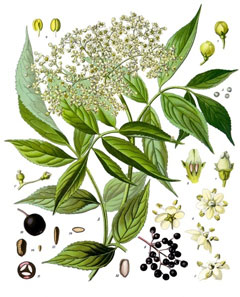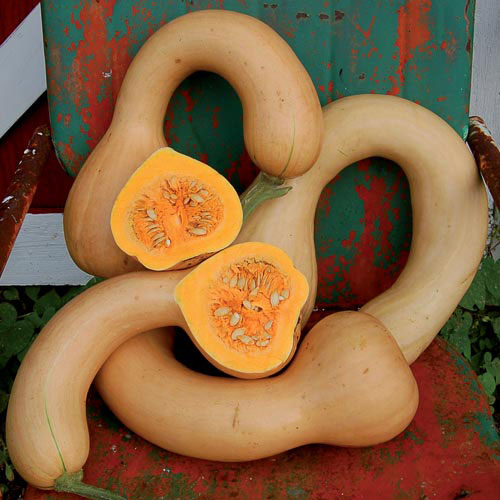As I’m choosing the vegetables that will get planted in my garden this year I’m adding my insane research results to the blog. I’ve chosen Silver Queen and Country Gentleman for my corn this year and I’m happy with those choices for now. The other varieties below will get planted eventually, but a couple at a time. This will finish my walk down the heirloom corn garden path. [Maybe]
Bear Paw. A popcorn created by Glenn Thomson of Vermont and grown between 1930 and the mid-1960’s. It was served in the Vermont exhibition of the World’s Fair. It is available today. Plants are about 4 to 5 ft. The ears are flattened and split at the silk end, some said resembling a bear paw. An ear can actually split into more than two resembling a crude hand shape. While it isn’t as old a variety as the rest of the list, I’ve included it because of its uniqueness. It is available from Seed Savers Exchange, cherrygal.com, etc.

Black Mexican. “If you have never tried Black Mexican corn you should do so…It is said to contain a higher percentage of sugar than any other variety. The only thing against it is its appearance. The fresh kernels are a beautiful blue-black, but in the pot they lose their life and luster. The cooked ears are about as unattractive as black bean soup, but the flavor is delicious beyond words”. – “Country Life in America”. July 1904.
Some period sources said it was not preferred by 19th/early 20th century market growers because the corn turns from white to very dark as it ages and customers could tell if it wasn’t at its prime by the color. It is very interesting to see the color change. Others found that it crossed too easily with other corns, though there was no real discernible difference. “There is no evidence, however, that this variety crosses more readily than others, but when crosses of Black Mexican and other varieties do occur, the effects are more readily seen.” ““Bulletin”. Issues 183-191. Dept. Ag. 1911. Corbett, Lee. “Garden Farming”. 1913.
The name is misleading. It was apparently first bred in New York, probably from Iroquois Black Puckers. Some period sources dated it from 1864, but it was found by this writer earlier in the Essex Agricultural Society’s “Transactions” in 1857. “Several collections of excellent sweet corn were exhibited by S. A. Merrill, of Salem, and others, but among them all we did not find any specimens of the Black Mexican. Of ten varieties which we tested the past season, this was decidedly the sweetest. The ear is rather below the average size and matures somewhat late, the kernels when ripe being of a rich, dark, purple color, but when in the milk but slightly tinged with purple…Black Mexican is prolific, will bear close planting, and we can confidently recommend it to the gardeners and farmers of Essex”.
In 1866, Fearing Burr called it, “Black Sweet, or Mexican. Slate Sweet” and said it was sweet, tender, and well flavored, “remains a long period in condition for use”, and aside from its color which some found objectionable was well worth cultivation. Black Mexican was offered by James J. H. Gregory of Marblehead, Mass. In his 1863 catalog.
It is available today from Southern Exposure Seed Exchange, Victory Seed, and others. Seed may be Aztec Black or an Aztec Black cross.
Country Gentleman. “Very desirable”. Still available today. See previous post.

Golden Bantam. Stalks 4 ft. 5 in. ears. Tender skin on the kernels. Golden Bantam was featured in the Burpee catalog in 1902. In the 1903, W. A. Burpee Farm Annual said William Chambers of Greenfield, Mass. grew this corn long before his neighbors had ripe corn for their tables but would never sell seed. Mr. Chambers died ca. 1891 and his corn was grown and the seed kept pure by Mr. J. G. Pickett, also of Greenfield. E. L. Coy of New York, who was a friend of W. Atlee Burpee, was served some Golden Bantam at a meal when visiting in Greenfield.
Mr. Coy purchased all the seed he could from Mr. Pickett and sent them to Mr. Burpee claiming it was the sweetest and richest corn he’d ever eaten. It was Burpee who named the variety when he released it to the public in 1902, otherwise it should rightly be called Chambers’ Sweet Corn.
Mr. Chambers is thought to have bred his corn from seed obtained by James J. H. Gregory of Marblehead, Mass which was called Golden Sweet. Golden Sweet was a cross between a yellow field corn and Darling’s Early, possibly the first named sweet corn variety. Golden Bantam is still available while Golden Sweet and Darling’s Early have fallen by the wayside.
“The name and fame of Golden Bantam Corn is known everywhere. It has the call in summer when fresh corn is on the market.” Carpenter’s Golden Sweet was a later improvement of Golden Bantam. – Blackmore. “Merchant’s Manual of Advertising”. 1921. See also: “Vegetables of New York”. 1934.
Howling Mob. C. D. Keller of Toledo, Ohio developed this corn and named it because he said customers were so anxious to get it at markets they became a “howling mob” when it was offered for sale. Not much is found on Mr. Keller other than classified ads for seed sales. Howling Mob was introduced in 1905 and remains available today from R. H. Shumway. It grows to 6 or 7 feet and ears are 8 to 9 inches long with 12 to 14 rows of kernels. This corn came very close to being lost.
Stowell’s Evergreen. See previous post.
Bloody Butcher. This is a beautiful dark red corn, the color of which was likened to blood. Some accounts say it was being grown at least as early as 1845, but this writer found no mention of it earlier than the 1870’s. In 1919, Lamkin claimed Colby Bloody Butcher was grown in Missouri for the “past 25 years” – which would have been sometime around 1894.

Bloody Butcher, from the Southern Exposure Seed Exchange website
It is a dent corn and a tall one reaching 10 to 12 feet. It supposedly produces two to six ears per stalk. The cobs vary in color from pink to red. It is primarily used for flour, grits, or meal but can be eaten when young and fresh.
“Bloody Butcher is a name applied to corn having a deep-red grain. The cap, or rather the crown, end of the kernels varies in color for the different varieties, but are usually lighter in color than the remainder of the kernel. The Colby Bloody Butcher is the only variety of this class that has proved to be an outstanding one…As a rule Bloody Butcher corn is not any more productive than corn of any other color”. – “Biennial Report of the Kansas State Board of Agriculture”. 1921.
Hickory King. This dent corn is available in white or yellow. It is well known in the South as a hominy corn. “Hickory King corn was originated by A. O. Lee, Bartee, Va. I understand that there is a railroad station called Hickory near his place which furnishes the name of this reliable variety…The Hickory King corn is remarkable for having the largest kernels and the smallest cob in proportion to depth of kernels…”. – Eyck, Albert. “Corn”. 1914.
Leaming’s. Jacob Spicer Leaming [1815-1885] of Clinton Co., Ohio is credited with developing this yellow dent corn. His ancestors are outlined in a “Report” published by the Ohio Corn Improvement Assoc. in 1910 and that source was also an account of the development of his corn. The article from which the Association quoted was published by his son in 1888. His corn was so much appreciated that the publication says, “the best part of him is still above ground, and the memory of him grows green each year in a thousand tasseled fields”.
Mr. Leaming’s father, Christopher, was growing corn with the help of his sons, one of whom was 10-year old Jacob Spicer Leaming, by 1826.
“In 1855, Mr. [Jacob Spicer] Leaming was driving a wagon in Hamilton County and stopped at a wayside corn field to ask some men husking corn in the field if they might sell him enough corn to feed his horses. He was so impressed with the corn that he bought a bushel of corn for seed.
He first planted the corn in 1856 and spent some 30 years improving it. After his 1856 crop was harvested he shared seed with several neighbors and the seed became known as Leaming’s corn.
Jacob was awarded a silver medal for his corn at the Paris World’s Fair in 1884. He died the following year. In 1900 Jacob’s son, Peter D. Leaming, took a bronze medal at the Paris Exposition for his seed corn – the corn his father developed.
Leaming’s corn, probably the Improved Leaming, is rare, but available today from Southern Exposure Seed Exchange.
Neal’s Paymaster. William H. Neal bred this variety from Tennessee Red Cob. “An interesting story was published recently in a Tennessee newspaper relative to the manner in which W. H. Neal, of the Maple Dale Farm, Wilson county, Tennessee, had developed since 1898 what is known as Neal’s Paymaster corn, said to be largely responsible for the excellent yield in that state this year.” The experts at the Tennessee Agricultural Dept. recommended it for Tennessee and other states. – “The Seed World”. Dec. 16, 1921. It is available from Sandhill Preservation.

Tennessee Red Cob
Luther Hill sweet corn. Luther Hill developed this about 1902 in Sussex Co., New Jersey. Mr. Hill was the horticulturist at Rutgers University. Luther Hill Sweet was used to breed Silver Queen corn. It can produce two years per stalk. It is rare, but available today from the Sustainable Seed Co. and Southern Exposure Seed Exchange. It has a short ripening period allowing for quick processing for the freezer.
Gaspe Flint. Supposedly documented by Jacques Cartier in 1534 and named for the Gaspe Peninsula of Quebec. The plants reach to only about 2 ½ feet with cobs about 4 inches. It is available from Heritage Harvest Seed Co. and Sherck’s Heirloom Vegetables, Plants, & Seeds.
Japonica Striped Maize, aka Japanese corn. This is a beautiful corn with striped white and pink in the leaves. It was touted as new in 1867 by the “Magazine of Horticulture, Botany, and All Useful Discoveries and Improvements in Rural Affairs”. The seed was brought from Japan by Thomas Hogg. – “Genetics Laboratory Manual”. 1918.

From the Southern Exposure Seed Exchange website. Why not order today?
“American Agriculturist” printed a piece on the corn in March 1866 saying Hogg sent the seed to his brother from Japan. The author said when the plants were about two feet high they were also streaked with rose color in the leaves but claimed the pink dissipated as the plants got older.
“The Japanese corn has a very peculiar appearance, the leaves being striped with white”. – “Report”. Vol. 18-20. 1893.
“A variety of Japanese corn has been successfully grown for several years on the grounds of Cornell University. While it produced good sized ears, it is not so valuable as the ordinary variety under cultivation. Its distinctive feature is that its leaves are striped similar to ribbon grass”. – “The Cultivator & Country Gentleman”. March 14, 1895.
Seed are available from several sources including Heritage Harvest Seed.
Tom Thumb Popcorn. The earliest origins of this yellow variety are unknown, but it was found in the “Annual Report” of 1889. It was featured in John Lewis Child’s catalog 10 years later in 1899. Plants are said to be very productive but a diminutive 2 feet tall with ears about 2 to 3 inches. Childs recommended it for city or village lots where space was limited. It is available from Heritage Harvest Seed.

Truckers Favorite. Trucker’s Favorite is an heirloom dent corn. The December 1913 issue of “The Southern Planter” noted that Mr. Charles G. Diessner had received 2nd prize at a fair for his Truckers Favorite corn. Mention of it was found in 1905 in a publication by the University of Maryland, “Control Series”.
“There is no early garden corn so extensively grown in the South as Trucker’s Favorite corn. It is much hardier than any sugar corn and can be planted weeks earlier, and is ready for the table or market in about 70 days. Although not a sugar corn, it makes the finest roasting ears.” – T. W. Woods Seed Co. 1938.
It can be eaten fresh or dried for flour or meal. Sources describe it as heat tolerant, thus its popularity in the hot humid South. Seed are available from My Patriot Supply, Sustainable Seed Co., Gurney’s, St. Clare’s Seeds, etc.
May your soil be fertile, your crop abundant, and your meals truly blissful, Vickie (The Historic Foodie). ©
































You must be logged in to post a comment.